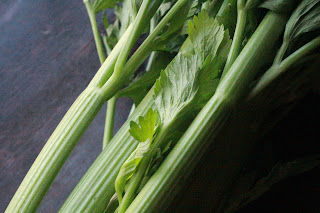To poach is to gently cook in liquid, the liquid being a stock, broth, wine, or maybe a syrup depending on what is being prepared.
The temperature remains fairly low, and most of the time poaching calls for the liquid to remain just at a simmer. Fish is fragile, and this helps to maintain it's shape and texture.
We will first prepare a court bouillon in which to poach the fish.
The purpose of the method is to delicately flavor the fish, and since the heat is low and the cooking medium a liquid that will completely envelop the fish, the dish will also retain moisture.
The purpose of this post is mostly as a poaching lesson and I think it's a good technique to know. However, I also think that nowadays people want and expect more flavor from their food than what poaching would deliver (thus, sauces can save the day, so to speak). Poached fish is something you don't see as often as other preparations.
The flavors are definitely mild, and I can't imagine you would want to serve it alongside anything that might overpower it.
Some days are mild fish sorts of days, and that's ok.
In this case, I'm keeping it very simple: there's no sauce other than the poaching liquid. You could, of course, prepare a vinaigrette or beurre blanc for the fish if you so desire. Likewise, a caper-y, buttery sauce with a little bite might be nice, too.
And it's pretty healthy and relatively light since there's just a bit of butter used to saute the leeks, which then becomes part of the poaching liquid.
When making poached fish, you'll probably want a more sturdy fish as opposed to those more delicate types that could potentially fall apart in the cooking liquid. And you could certainly poach smaller fillets of fish, maybe 5-8 oz. each, but the cooking time will differ. Pay attention, watch for them to be cooked through and don't overcook. Those fish that have a thicker fillet, and those with more dense flesh will take a little longer. It's not so much science as it is common sense.
Anyway, rigidity will not help you in the least when it comes to fish. What you really want may not be any good or even available when you go shopping (especially if you happen to be of the landlocked persuasion).
Sure, you can have a general idea of what you want, but speak with the fishmonger. See what's fresh. See what he might recommend and go from there.
P.S.
Parsley does wonders for brightening the look of a poached fish. Not that it's completely unappetizing, but visual appeal can be pretty important for food.
Poached Fish With Leeks
(Poaching technique from Mark Bittman)
Serves 4
2 c (480 ml) water
1/2 c (120 ml) white wine
1 lemon, thinly sliced
1 medium onion, roughly chopped
1/2 rib celery, roughly chopped
3 cloves garlic, crushed and roughly chopped
10 black peppercorns
1 t (7 g) Kosher salt
5 sprigs of thyme
1 bay leaf
3 T (42 g) butter
3 medium leeks, white and light green parts only (sliced lengthwise, then cut crosswise into 1 cm to 1 inch pieces, washed twice in cool water to remove sand and dirt, and drained)
2 fish steaks, skin on, 1 lb. each (or a little less)
Additional water, white wine, fish or vegetable broth if needed
Lemon for serving (optional)
Place the water, wine, lemon slices, onion, celery, garlic, peppercorns, salt, thyme, and bay leaf in a medium saucepan. Bring the mixture to a boil, reduce the heat, and simmer 10 minutes. Strain, discard the solids, and cool the broth.
Melt the butter in a large dutch oven or saucepan over medium heat. Saute the leeks until softened, a few minutes. Place the fish steaks on top of the leeks and pour enough stock to just cover the fish (add a bit of extra liquid if necessary). Bring to a full boil, cover, and remove the pan from the heat. Let sit at least 10 minutes to finish cooking in the residual heat. The fish will be done when it is opaque and flakes easily with the tip of a knife.
Carefully remove Serve the fish with leeks and some of the poaching liquid, salt and pepper for individual seasoning, as well as wedges of lemon if desired.
















Seriously, the last 4 posts WERE white!
ReplyDeleteHurray for fish.